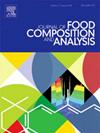Analysis of EU RASFF notifications on genetically modified food and feed from 2002 to 2023
IF 4
2区 农林科学
Q2 CHEMISTRY, APPLIED
引用次数: 0
Abstract
This study examines 827 notifications about genetically modified (GM) food (724) and feed (103) in the EU's Rapid Alert System for Food and Feed (RASFF) from 2002 to 2023. It identifies the most frequently notified GM products, their origin countries, notification year, type, risk level, and subsequent actions taken by authorities. Alert notifications represented 19.20 % of food and 3.88 % of feed cases. Border rejections were more common for food (25.55 %) than feed (18.45 %). China was the primary source of food notifications (35.08 %), while the US led in feed notifications (35.92 %). Cereals and bakery products were the most reported food category (59.94 %), followed by fruits and vegetables (11.19 %). Rice was the product most often involved in GM food notifications, constituting 57.73 % of the total, followed by linseed (14.64 %), papaya (10.77 %), and food supplements (5.11 %). Undecided risk decisions were more prevalent in food (90.61 %) than feed notifications (66.02 %). Conversely, the 'not serious' category was higher for feed (32.04 %) than food (5.25 %). Serious and potential risk notifications were low for both categories. Market withdrawals accounted for 30.25 % of food and 23.30 % of feed notifications. This overview provides insights for policymakers and stakeholders in the agri-food sector, highlighting trends and areas of concern.
2002 年至 2023 年欧盟转基因食品和饲料通报分析
本研究调查了欧盟食品和饲料快速预警系统(RASFF)从 2002 年到 2023 年发布的 827 份转基因食品(724 份)和饲料(103 份)通报。该报告确定了最常被通报的转基因产品、其原产国、通报年份、类型、风险等级以及当局随后采取的行动。预警通报占食品案例的 19.20%,占饲料案例的 3.88%。食品(25.55%)比饲料(18.45%)更容易遭到边境拒绝。中国是食品通报的主要来源国(35.08%),而美国则是饲料通报的主要来源国(35.92%)。谷物和烘焙食品是报告最多的食品类别(59.94%),其次是水果和蔬菜(11.19%)。大米是转基因食品通报中最常涉及的产品,占总数的 57.73%,其次是亚麻籽(14.64%)、木瓜(10.77%)和食品补充剂(5.11%)。食品(90.61 %)中未确定风险决定的比例高于饲料通知(66.02 %)。相反,"不严重 "类别在饲料中的比例(32.04%)高于食品(5.25%)。两个类别的严重和潜在风险通报率都很低。撤出市场占食品通报的 30.25%,占饲料通报的 23.30%。本概述为农业食品行业的政策制定者和利益相关者提供了见解,突出了趋势和关注领域。
本文章由计算机程序翻译,如有差异,请以英文原文为准。
求助全文
约1分钟内获得全文
求助全文
来源期刊

Journal of Food Composition and Analysis
工程技术-食品科技
CiteScore
6.20
自引率
11.60%
发文量
601
审稿时长
53 days
期刊介绍:
The Journal of Food Composition and Analysis publishes manuscripts on scientific aspects of data on the chemical composition of human foods, with particular emphasis on actual data on composition of foods; analytical methods; studies on the manipulation, storage, distribution and use of food composition data; and studies on the statistics, use and distribution of such data and data systems. The Journal''s basis is nutrient composition, with increasing emphasis on bioactive non-nutrient and anti-nutrient components. Papers must provide sufficient description of the food samples, analytical methods, quality control procedures and statistical treatments of the data to permit the end users of the food composition data to evaluate the appropriateness of such data in their projects.
The Journal does not publish papers on: microbiological compounds; sensory quality; aromatics/volatiles in food and wine; essential oils; organoleptic characteristics of food; physical properties; or clinical papers and pharmacology-related papers.
 求助内容:
求助内容: 应助结果提醒方式:
应助结果提醒方式:


